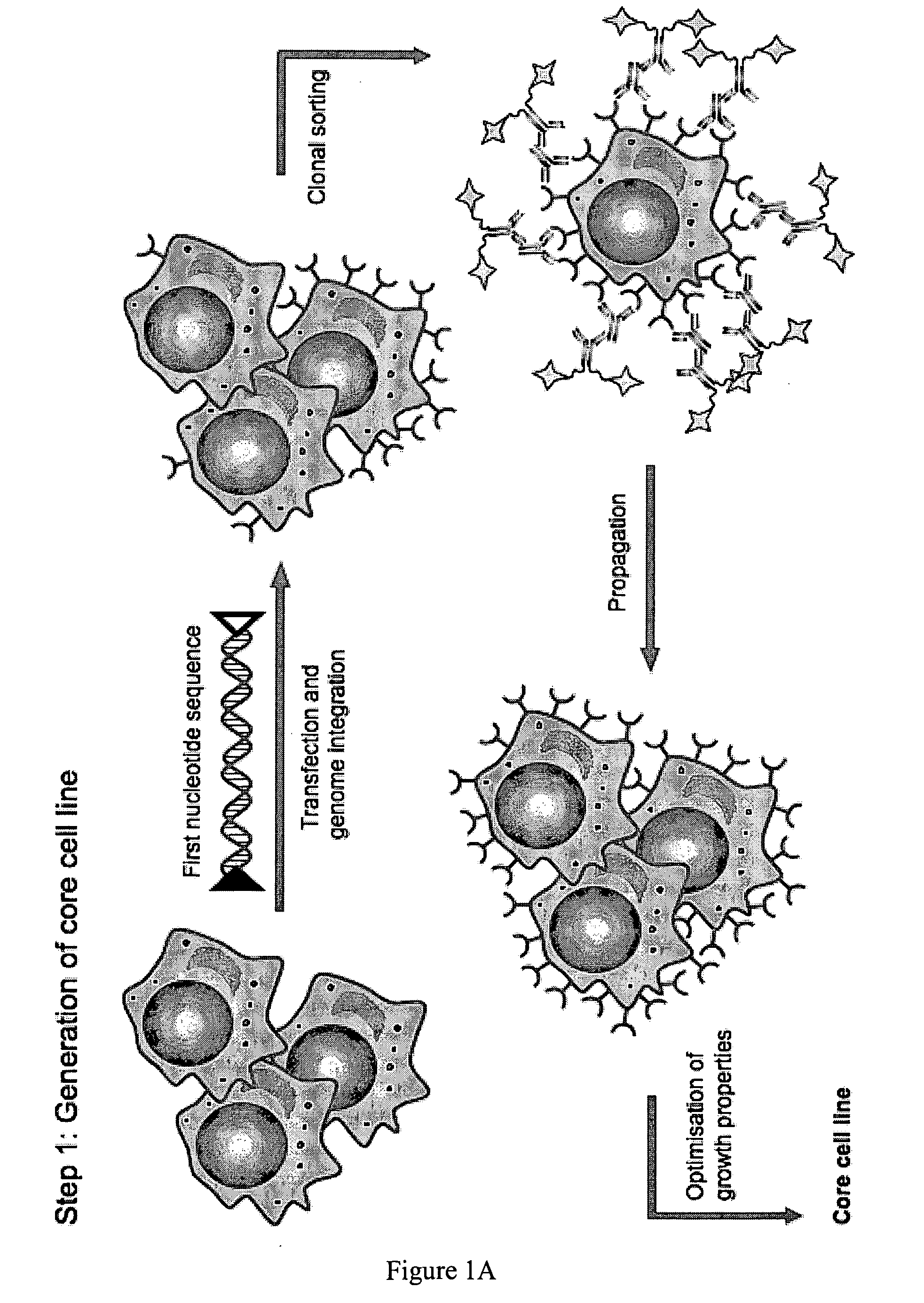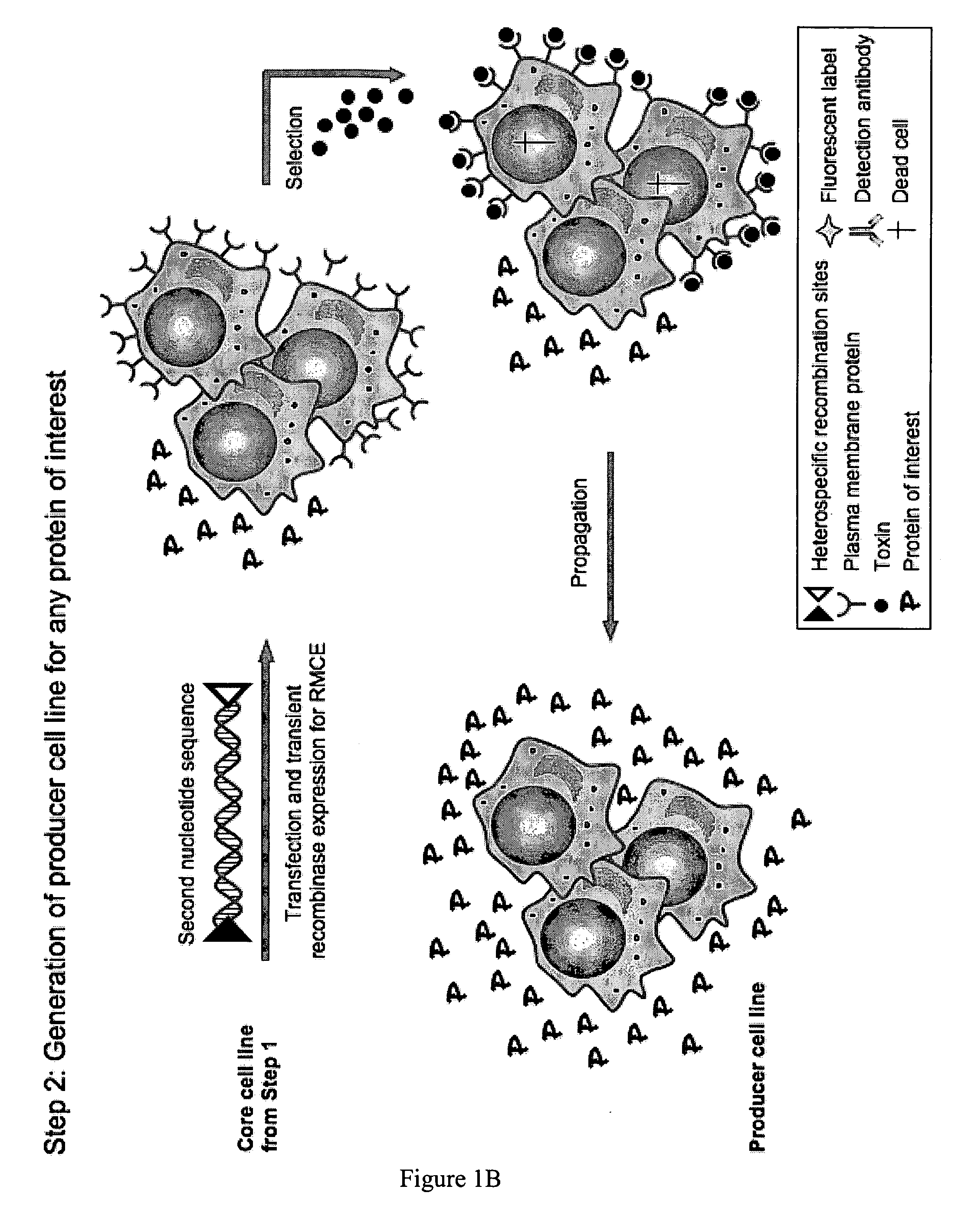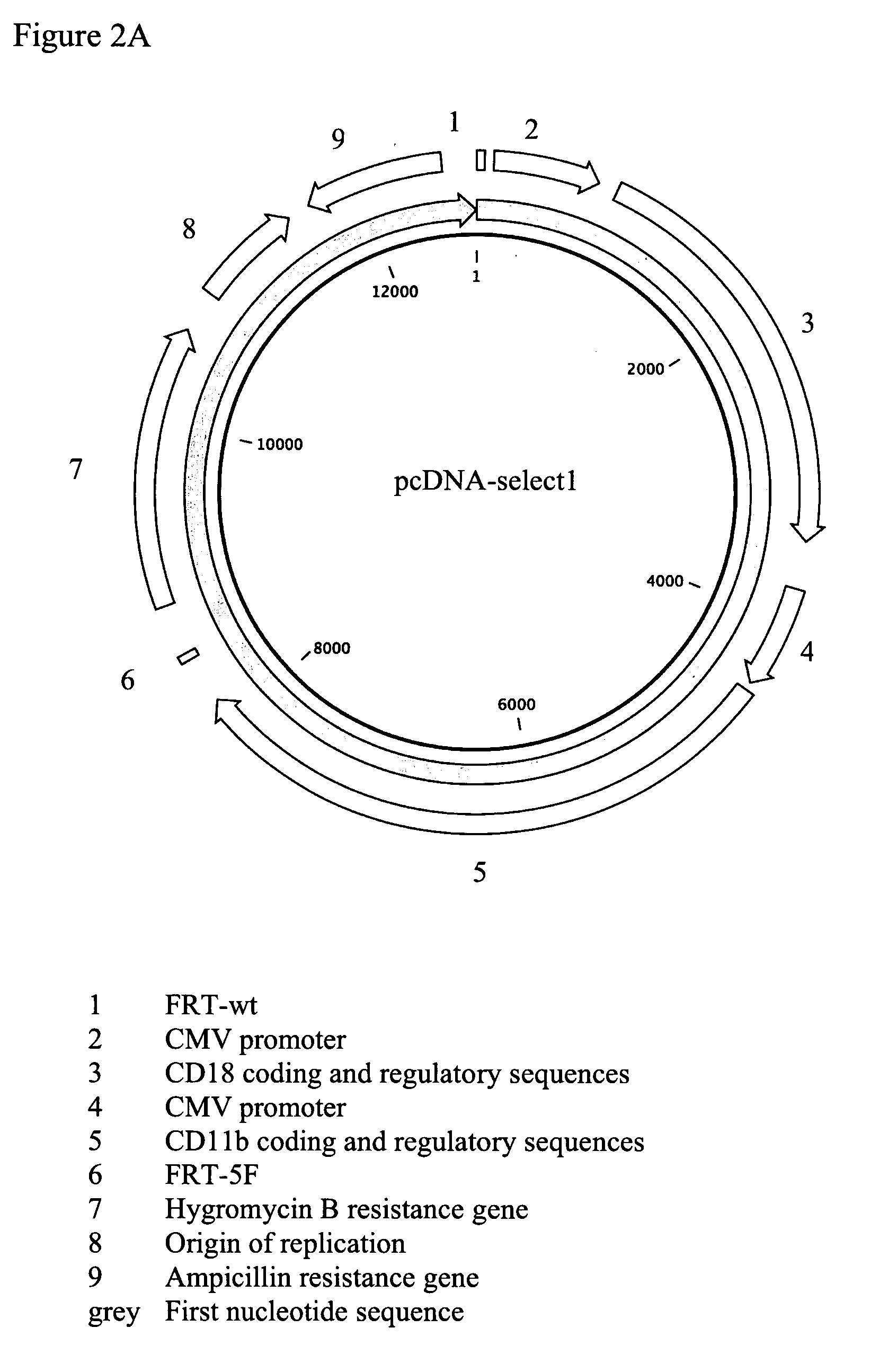Genetically modified eukaryotic cells
a technology of eukaryotic cells and eukaryotic cells, applied in foreign genetic material cells, plant cells, sugar derivatives, etc., can solve the problems of large doses, large bottlenecks, and efficient selection of high-producing cells for human treatment proteins, and achieve the effect of efficient cell screening
- Summary
- Abstract
- Description
- Claims
- Application Information
AI Technical Summary
Benefits of technology
Problems solved by technology
Method used
Image
Examples
example 1
[0066]Proof-of-concept using αMβ2 integrin (CD11b / CD18) as toxin receptor and Adenylate cyclase toxin (CyaA) as toxic agent
Step 1: Verification of the Stringency of Selection
First Nucleotide Sequence
[0067]The expression vector pcDNA-select1, a derivative of pcDNA 3.1(+) (Invitrogen), was generated, harbouring the genes for the plasma membrane protein flanked by the recombination sites for gene exchange (vector map: FIG. 2A). As a plasma membrane protein the integrin protein CD18 / CD11b was chosen. The gene encoding the CD18 subunit (Accession number NM—008404) was copied and amplified using the genome of mouse cell line J774A.1 as template, whereas the gene for the CD11b subunit (Accession number NM—008401) was ordered from a company providing DNA synthesis services (GeneArt). The site-specific recombination sites chosen were the non-interacting heterospecific FRTwt / FRT-5F sites described by Ellermeier et al. (2002) and Schucht et al. (2006). The pcDNA-select 1 vector was used for tr...
example 2
[0084]Proof-of-concept using Guanylyl cyclase C (GC-C) as toxin receptor and Heat-stable enterotoxin (STa) as toxic agent.
Step 1: Verification of the Stringency of Selection
[0085]In order to strengthen the proof-of-concept of selection stringency provided with EXAMPLE 1 and to demonstrate its broad validity, the same line of experiments were performed using a different receptor / toxin system.
First Nucleotide Sequence
[0086]The expression vector pcDNA-select2 differs from pcDNA-select 1 (see FIG. 202A) in two respects. It harbours the gene for the plasma membrane protein Guanylyl cyclase C (Hasegawa et al. 2005) instead of the genes for CD18 / CD11b, and the receptor-encoding gene is flanked by the recombination sites loxP / lox2272 (Saito and Tanaka) instead of the FRTwt / FRT-5F sites. For the map of pcDNA-select2 see FIG. 2C. The gene encoding Guanylyl cyclase C was ordered from GeneArt. The pcDNA-select2 vector was used for transfection in its entirety, thus constituting the first nucleo...
example 3
Generating a Producer Cell Line from a Core Cell Line
Step 1: Generation of a Core Cell Line
First Nucleotide Sequence
[0097]The expression vector pUTR-select (vector map: FIG. 2E) harbouring the coding sequences for the plasma membrane proteins CD11b (Accession number NM—008401) and CD18 (Accession number (NM—008404) flanked by the FRTwt / FRT-5F recombination sites (Ellermeier et al. 2002; Schucht et al. 2006) was cut with restriction endonucleases NruI and PmeI and the DNA fragments separated by electrophoresis on an ethidium bromide stained 0.7% (w / v) agarose gel. The 11 kbp DNA fragment constituting the first nucleotide sequence was excised and purified using the EZNA MicroElute Gel Extraction Kit (Omega Bio-Tek) following the manufacturer's instructions and used for transfection.
Generation of Stably Transfected Cells
[0098]CHO-K1 cells (ATTC) adapted to grow in protein-free medium were propagated according to the manufacturer's recommendations. 107 cells were transfected by electrop...
PUM
| Property | Measurement | Unit |
|---|---|---|
| concentration | aaaaa | aaaaa |
| concentration | aaaaa | aaaaa |
| pH | aaaaa | aaaaa |
Abstract
Description
Claims
Application Information
 Login to View More
Login to View More - R&D
- Intellectual Property
- Life Sciences
- Materials
- Tech Scout
- Unparalleled Data Quality
- Higher Quality Content
- 60% Fewer Hallucinations
Browse by: Latest US Patents, China's latest patents, Technical Efficacy Thesaurus, Application Domain, Technology Topic, Popular Technical Reports.
© 2025 PatSnap. All rights reserved.Legal|Privacy policy|Modern Slavery Act Transparency Statement|Sitemap|About US| Contact US: help@patsnap.com



